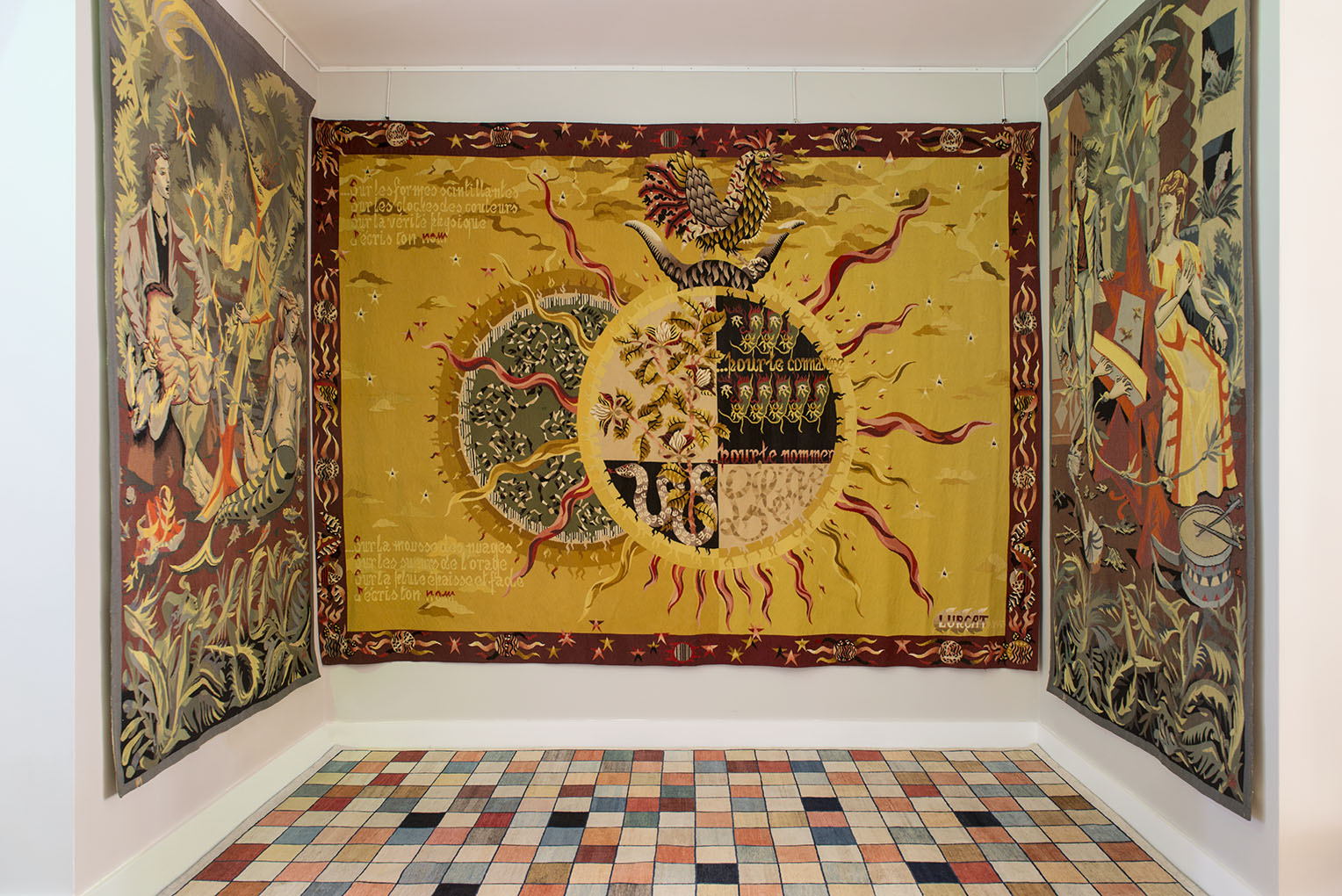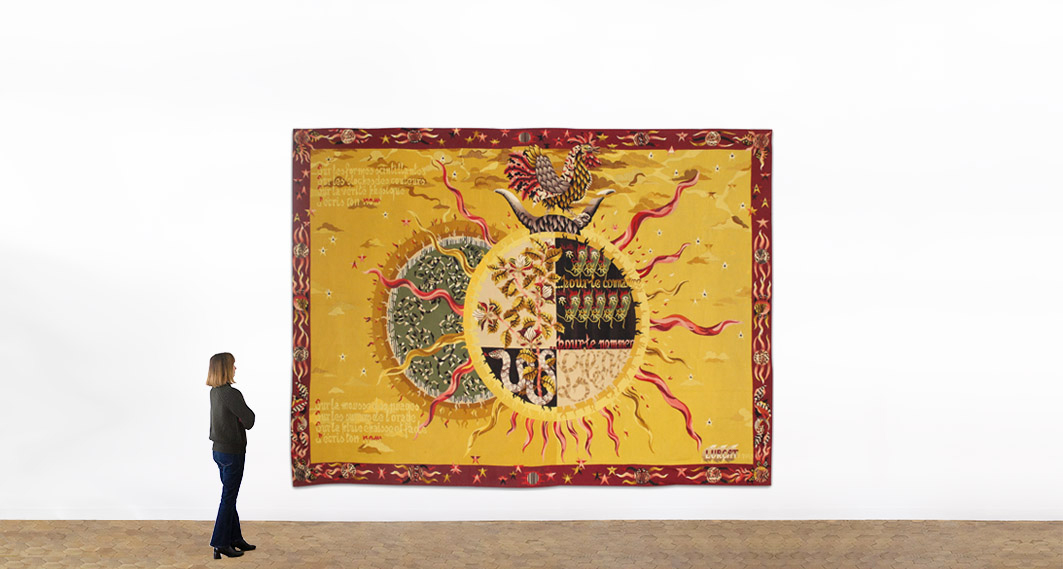Liberté
Tapestry after a cartoon by Jean Lurçat (1892- 1966)
France, Aubusson, probably Suzanne Goubely workshop
Woven in wool and cotton (wrap in cotton, weft in wool)
Signature of the artist
1943
As the woven date at the bottom right of the work indicates, it was composed in 1943 when Jean Lurçat was a Resistance fighter in the Lot. Probably put on loom when the free zone had been abolished, it is thus "under the nose and beard of the Germans present in the town and circulating in the workshops that the tapestry was made "* probably in the Goubely workshops, even if, on this edition, the signature of this workshop is missing.
Another very important element of this tapestry which is found in the different versions, it is obviously the verses of the famous poem Liberté by Paul Éluard which are taken up again.
Jean Lurçat was born in 1892 in Bruyère and died in 1966 in Saint Paul de Vence. Jean Lurçat started studying medicine but quickly abandoned this path. He meets Jean proved in Nancy, and then begins their collaboration. In 1912, he moves to Paris with his brother André (architect) and takes courses at the Colarossi Academy. There he met the great names of 20th century painting such as Henri Matisse, Paul Cézanne and Auguste Renoir. Jean Lurçat began his textile adventure with the small stitch before concentrating on tapestry.
Jean Lurçat's woven work is masterful. The artist is internationally known and his name is closely associated with the revival of French tapestry in the post-war years. He is the most important painter and cartoonist of the 20th century. In 1947, Lurçat became President of the Association of Tapestry Cardboard Painters. The A.P.C.T. groups together the artists who participated most effectively in the Renaissance of the Tapestry, that is to say, who understood the absolute necessity not only to re-adopt the primary language of this essentially mural art, but also to proceed at the same time with the reorganisation of the industry on which it depends. "(Text of presentation of the A.P.C.T.)




